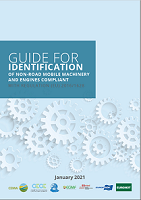Robotics News

June 2018
Putting faces to the jobs at risk of automation
OECD published a new study on the potential effects of automation and artificial intelligence on employment. The research paper sheds light on the number of jobs at risk of automation (and the people at risk), looks at how different technologies affect that risk, and identifies the tasks/skills least likely to be automated. The tasks that AI and robots cannot do are shrinking rapidly. While only one in seven jobs may be lost to automation, many others will change significantly.
This study extended the scope of previous surveys to a total of 32 countries participating in the Survey of Adult Skills (PIAAC, which is conducted by OECD), but again using the so-called bottlenecks to automation as introduced by Osborne and Frey.
The OECD stresses the importance of tasks rather than occupations and skills rather than qualifications. It is of importance to look at what the labour market needs through the use of signals (wages, employment dynamics). Whether workers lose their job as a result of automation or have to adapt to new tasks and job content, the challenge for adult learning systems is considerable. At present, about 40% of workers participate in job-related training, on average across OECD countries, but participation often amounts to just a few hours per year. The low-skilled receive much less training than their more skilled counterparts. The training challenge is amplified by the fact that the risk of automation is not distributed equally among workers, making existing differences in access to training even more problematic.
Today, workers in occupations with a high risk of automation display much higher unemployment rates than those with low risk. Workers in the most automatable jobs work approximately eight hours less per week than workers in the least automatable professions.
Workers in jobs with a high risk of automation have lower hourly earnings in most countries. On average, a 10% higher risk of automation corresponds to a 4.3% decrease in hourly earnings. This suggests that those at risk of automation are often already in a vulnerable position in the labour market, which may be exacerbated as automatisation progresses.
While the prospect that every second job in the OECD may be impacted by automation is daunting, the researchers make it clear that the risk of jobs being automated is just a technical possibility. The actual implementation of full or partial job automation will depend on a range of other factors such as technology penetration and adoption, the cost of human labour relative to the new technologies and the social preferences for automating certain tasks. Take-up of new technologies lags behind their technical feasibility and some innovations are never widely implemented. Jobs are likely to be created for the development, implementation, maintenance and use of new technology.
Key outcomes:
- About 14 % of jobs in OECD are highly automatable. Another 32% of jobs could face substancial change in how they are carried out.
- Unequal distribution of the risk of automation
- Automation mostly affects the manufacturing industry and agriculture, but some service sector jobs are highly automatable, too.
- Entering the labour market may become more difficult for young professionals as student jobs and entry-level positions have a higher risk of automation than jobs held by older workers.
- The highest risk is concentrated in routine jobs with low skill requirements and often low wages while the lowest risk applies to a broader range of jobs from professionals to social workers,
- Training is not working to offset these risks as participation in training is significantly lower for workers in jobs at high risk of automation than for other workers.
- These estimates are subject to considerable uncertainty. Moreover, not all jobs that are technically automatable will disappear. Other jobs will also be created and so employment in total may continue to rise.
- Risk of automation may differ across countries either because the structure of economic activities (industries) differs, or because the way these industries organize the jobs differs.
- Countries differ in their level of automatability both because of differences in the structure of their occupations (50% of total variation) and because of the differences in the composition of tasks within occupations (50% of total variation).
- Computer use declines with the level of job automatability. This suggests that computers, in the conventional meaning of the term* look more like labor augmenting, and not labor substituting technologies.
Policy recommendations:
- Education systems need to adapt to the changes brought about by automation: Basic skills (literacy and numeracy) are often in shortage and are essential to further learning. This includes skills such as cognitive and social intelligence but also extends to the skills needed to work effectively in a digital context, both as specialists and users of digital technologies.
- Adult learning is a crucial policy instrument: importance of training provision outside the workplace, particularly for workers whose jobs have the highest risk of being automated.
- Engage the low-skilled
- The likelihood of participating in any type of training, on the-job and outside the job, is found to be significantly lower among workers in jobs at risk of being automated. Workers at the highest risk of automation are more than three times less likely to have participated in on-the-job training, over a 12-month period, than workers in non-automatable jobs. These differences also apply to training duration: individuals in jobs with the highest risk of automation spend 29 hours less in job-related training annually than those in non-automatable jobs, ceteris paribus.
- Link training for the unemployed to labour market needs: Newly created jobs may require very different skills from those that are being destroyed and may be located in a different region
- Recognise informal and non-formal learning
- Invest in high-quality skill anticipation and assessment exercises and ensure use of skill needs data in policy;
- Stimulate demand for higher-level skills: public investment in new technology infrastructure; education programmes to boost ICT skills in schools and in the workplace
- Much of the variation in the risk of automation between industries and occupations reflects the way jobs are organised. Jobs with a smaller proportion of routine tasks or a more-balanced mix of routine and non-routine tasks have a reduced risk of automation. Hence is it is crucial to promote good practice in work organisation within firms and across industries.
Quicklinks
EUnited - European Engineering Industries Association,
BluePoint Building, Boulevard A. Reyers 80, , 1030 Brussels, Belgium, +32 27 06 84 21
Transparency Register number: 0289344948-82
BluePoint Building, Boulevard A. Reyers 80, , 1030 Brussels, Belgium, +32 27 06 84 21
Transparency Register number: 0289344948-82
© 2024 Eunited aisbl, Bruxelles















































































































